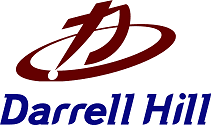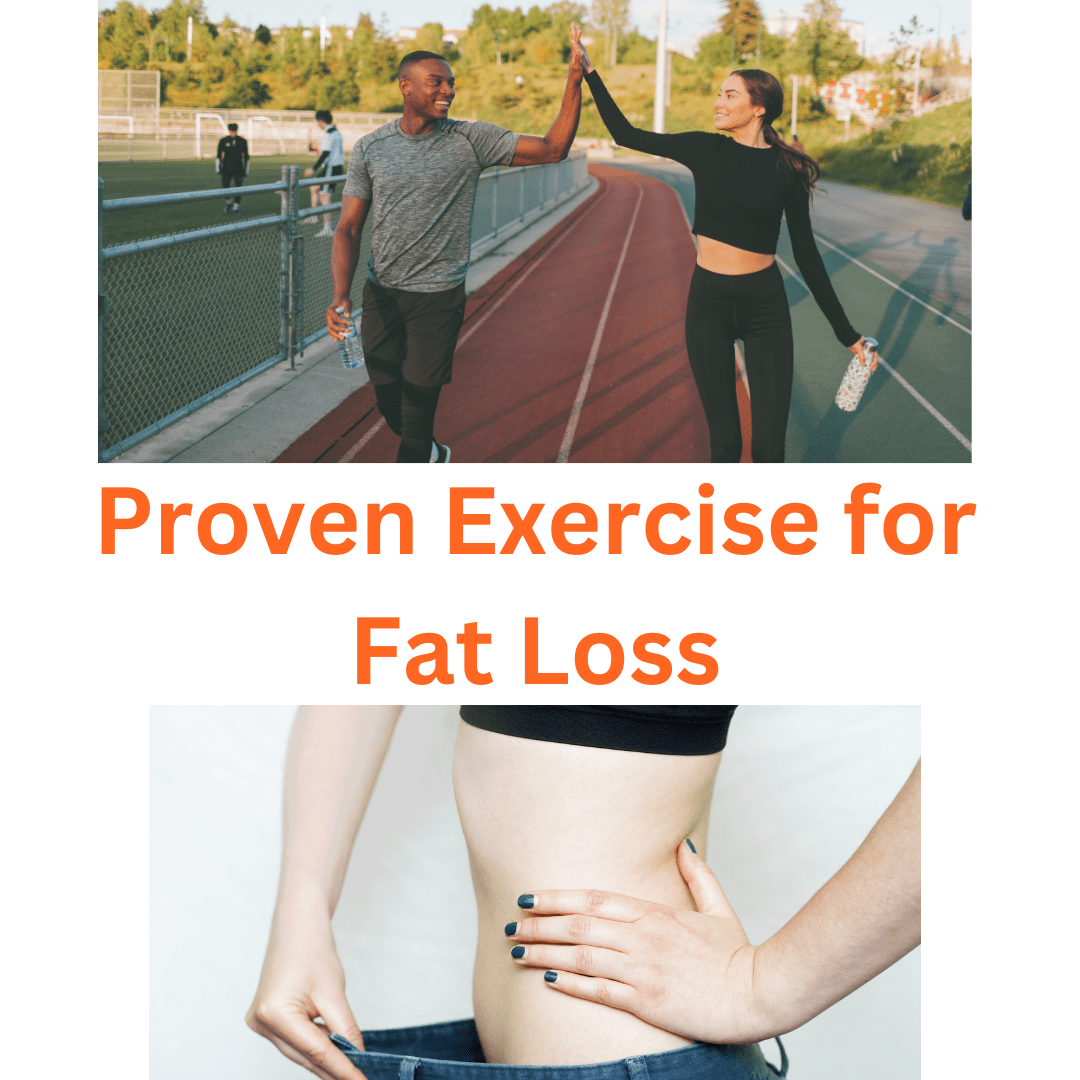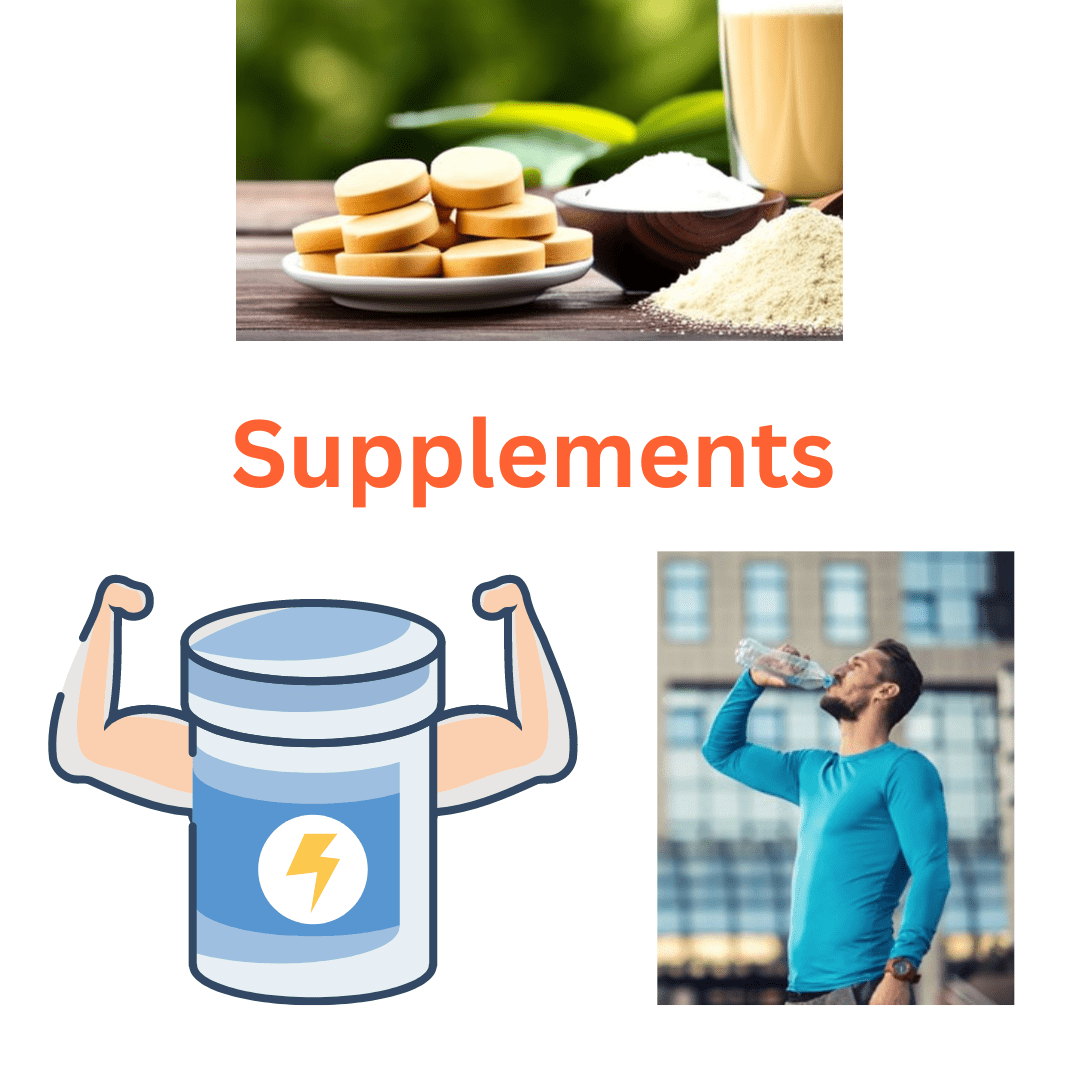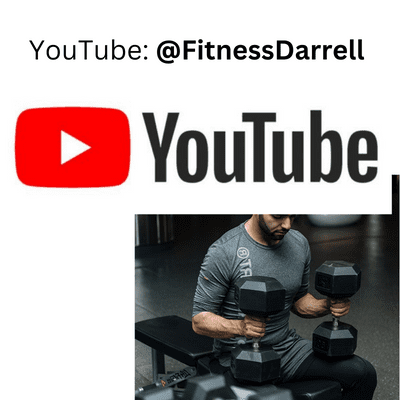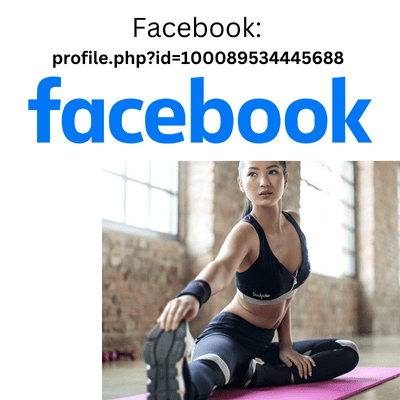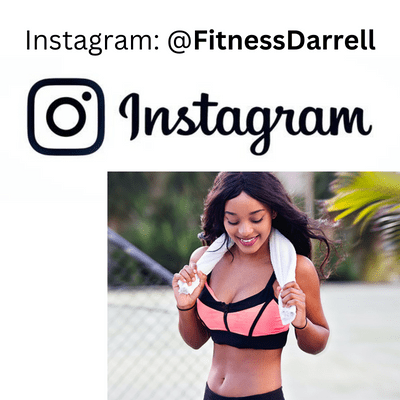
Movement and Functional Activities
Physical activity and exercise are essential components of a healthy lifestyle. However, how we exercise is just as important as how we exercise. A common problem people face when starting out is jumping straight to resistance training. Big mistake. The result is much higher chance of injury and a lower likelihood of making exercise a habit.
Feeling weak in all the wrong places? Try these functional movements and watch as your strength improves in areas you never knew existed.
Explanation of Movement and Functional Activities
Movement and functional activities are exercises that mimic the movements we do in everyday life. These exercises require multiple muscle groups to work together, improving overall strength, flexibility, balance, coordination, and endurance.
Functional activities help us perform daily tasks with greater ease and lead to better sports performance. Examples of these kinds of movements include squatting down to lift a heavy object off the floor or pushing a box across the room.
Importance of Incorporating Movement and Functional Activities into a Workout Routine
While targeted exercises can be beneficial for building strength in specific areas, incorporating movement and functional activities into your routine has unique benefits. Many traditional gym exercises focus on isolated muscles rather than whole-body movements. When done correctly, these exercises can improve your overall fitness level by engaging multiple muscle groups simultaneously.
They also have real-life applications beyond just physical fitness – they can make everyday tasks easier. Additionally, incorporating these movements into your workout routine can help prevent injury by strengthening the muscles in daily activities.
Overview of the Five Movements: Bend-and-Lift, Single Leg, Push, Pull, and Rotation
There are five main types of movement patterns: bend-and-lift (squatting), single-leg (lunging), pushing (pressing), pulling (rowing), and rotation (twisting). Bend-and-lift involves squatting down to pick something up or perform any activity where you bend at the waist.
Single-leg exercises involve lunging motions performed on one leg at a time. Push exercises involve pushing movements, such as push-ups or bench presses.
Pull exercises involve pulling motions, such as rows or pull-ups. Rotation movements involve twisting the torso, such as oblique twists.
Each of these five movement patterns uniquely benefits overall strength and fitness. Incorporating all five into your routine can help you build a well-rounded fitness program that prepares you for daily life and sports performance.
The Bend-and-Lift Movement
The bend-and-lift movement is a functional activity that involves bending at the hips and knees while keeping your back straight to pick up an object from the ground. This movement is essential for everyday activities such as lifting heavy objects or picking up a child or pet. When performing the bend-and-lift movement, several muscles are engaged.
These include the glutes, hamstrings, quadriceps, and muscles of the back (erector spinal). These muscles work together to stabilize and move your body during the movement.
Muscles Used in Bend-and-Lift Movement
- Butt (Glutes): The gluteus maximus muscle is one of the main muscles used during the bend-and-lift movement. It helps to extend your hip joint as you lift yourself back up.
- Hamstrings: the hamstring muscles on the back of your thighs also play an essential role in this movement by flexing your knees and hips.
- Quads (Quadriceps): the quadriceps muscles located on the front of your thighs work to extend your knees as you rise from a squat position.
- Back (Erector Spinae): the erector spinal muscles run alongside your spine and help keep it straight during such movements.
Examples of Exercises That Incorporate Bend-and-Lift Movement
Incorporating exercises that utilize this functional activity into your workout routine can benefit overall strength and mobility. Here are some examples of exercises that include bend-and-lift movements:
- Squats: Squats are a classic exercise that incorporates the bend-and-lift movement. They can be done with or without weights and can target various muscle groups depending on the variation performed.
- Deadlifts: Deadlifts are another great exercise that engages the muscles used in the bend-and-lift movement. They primarily target the glutes and hamstrings but also work with other muscle groups, such as the lower back and core.
- Lunges: Lunges are a unilateral exercise requiring you to step forward and lower your body into a lunge position. This movement engages one leg at a time and can help to improve balance and stability.
- Clean and Jerk: The clean and jerk is an Olympic weightlifting movement (hint, advanced after you have been doing resistance training for a while) that incorporates both a pull and push motion and a squat-like position to lift heavy weights overhead. It requires coordination, power, and explosiveness.
Incorporating these exercises into your workout routine can improve overall strength, mobility, balance, and coordination and help to reduce the risk of injury during everyday activities that involve bending or lifting.
Single Leg: Balancing Act for Stronger, More Coordinated Muscles
The single leg movement is one of the most critical functional activities regarding sports performance, injury prevention, and general fitness. The single-leg exercises target the muscles that stabilize your pelvis and spine during everyday activities like walking and running.
These exercises allow you to work on your balance, stability, coordination, and strength in a way that mimics real-life situations. In this section, we will define the single-leg movement, discuss the muscles used in this movement, and provide examples of exercises incorporating single-leg activities.
The Single Leg Movement: Definition and Explanation
The single-leg movement involves standing on one foot while performing an exercise or activity. This can include walking lunges, step-ups onto a high platform or bench, or even balancing on one foot while performing bicep curls with dumbbells. If you’re starting, only do body-weight exercises. The goal of these exercises is to challenge your balance and coordination while targeting specific muscle groups throughout your body.
Muscles Used in the Single-Leg Movement
The primary muscles used during the single-leg movement include:
- Your glutes (butt muscles).
- Quadriceps (thigh muscles).
- Hamstrings (back thigh muscles).
- Calves (lower leg muscles).
- Hip flexors (front hip muscles).
- Lower rear stabilizers and abdominals.
Your glutes help stabilize your pelvis while you balance on one foot by keeping it level with the ground.
Your quadriceps help extend your knee as you lift or push off that foot. Your hamstrings help control how fast or slow your knee bends as you lower into a squat or lunge position on that same foot.
Your calf helps control how fast or slow you come up onto your toe as you stand up from a squat position into an upright position before stepping forward onto the other foot. Your hip flexors help control how high you lift your knee as you step forward.
Examples of Exercises that Incorporate the Single-Leg Movement
Many different exercises incorporate the single-leg movement, including walking lunges, single-leg deadlifts, Bulgarian split squats, pistol squats, and step-ups onto a high platform or bench. Walking Lunges: Start by standing with your feet about shoulder-width apart.
Step forward with your right foot and lower yourself until both knees create 90-degree angles. Push off with your right foot to return to starting position, then repeat on the other leg.
Single-Leg Deadlifts: Stand on one foot and hold a weight in one hand before your thigh. Lean forward, keeping both legs straight, and hinge at the hip while lifting one leg from behind you.
Slowly return to the standing position, then repeat on the other side.
Bulgarian Split Squats: Begin by placing one foot onto a bench or chair behind you while holding weights down at your sides in each hand.
Slowly lower yourself into a squatting position, keeping your front knee directly above the ankle, and your back knee bent slightly toward the floor.
Pistol Squats: Begin by standing on one foot with the opposite leg extended straight out in front of you off the ground.
Slowly lower yourself into a squatting position keeping all weight balanced evenly over the heel of the extended foot. Step-Ups onto High
Platform or Bench: Begin by stepping up onto the platform with the left foot, followed quickly by the right catching balance before stepping back down, reversing the process, and starting again using the right leg first.
Lots of benefits result
Incorporating single-leg exercises into your workout routine can help improve stability, balance, coordination, strength, and functional fitness, which are critical for sports performance and everyday life activities such as walking up stairs or carrying groceries. Working on the muscles that stabilize your pelvis and spine can prevent injuries and improve your overall quality of life.
Push
Definition and Explanation of the Push Movement
The push movement involves the extension of the elbow joint, where force is generated by pushing an object away from the body. This movement pattern primarily targets the upper body musculature, emphasizing the chest, triceps, and shoulders. Examples of push movements include bench presses, overhead presses, push-ups, and dips.
Push movements are essential functional activities that can improve daily activities such as pushing doors open or carrying grocery bags. Incorporating push movements into a workout routine can also benefit athletes in various sports, such as basketball or football.
Muscles Used in the Push Movement
The primary muscles utilized in a push movement include:
Chest (Pectoralis Major): The pectoralis major is a large muscle that spans across your chest and is responsible for horizontal adduction of your arms.
Triceps: The triceps brachii is located at the back of your upper arm and extends your elbow joint.
Shoulder (Anterior Deltoid): The anterior deltoid sits at the front part of your shoulder and assists in shoulder flexion and horizontal adduction. Other muscles stabilizing these movements include the serratus anterior, rotator cuff muscles, and biceps brachii, among others.
Examples of Exercises that Incorporate Push Movements
1. Bench Press – This classic exercise requires lying on a bench with a weight above you while you lift it up and down to work out your chest muscles.
2. Overhead Press – An overhead press is done by standing with weights raised above you and repeatedly pressing them over your head to work out shoulder muscles.
3. Push-Ups – An excellent exercise for people who prefer not to use equipment; position yourself face down on a mat or floor, then raise yourself using hands placed just slightly wider than shoulder-width apart.
4. Dips – This exercise can be done on parallel bars or using a bench or other sturdy object.
Lower your body by bending your arms, then push yourself back up again.
5. Medicine Ball Chest Pass – This exercise involves throwing a medicine ball against a wall or partner, generating force through the chest and triceps muscles.
Incorporating these exercises into a workout routine can help promote muscle growth and strength in the upper body musculature while improving overall fitness levels. Remember to start with lower weights and gradually increase as you progress to prevent injury.
Pull
Definition and Explanation of Pull Movements
Pull movements involve using your muscles to pull weight or resistance toward your body. These movements are essential in building strength in the upper body, specifically the back, biceps, and forearms. Pull activities are also crucial for maintaining good posture and reducing the risk of developing back pain.
There are two types of pull movements: vertical pulls and horizontal pulls. Vertical pulls target the muscles used to lift objects from overhead, while horizontal pulls target the muscles used for rowing motions.
Muscles Used in Pull Movements
The primary muscles used during a pull movement include the lats (latissimus dorsi), rhomboids, trapezius, biceps, brachial, and forearms. These muscles work together to help move weight or resistance closer to your body.
During vertical pulls, such as pull-ups or lat pulldowns, the lats primarily engage with supporting muscles like the biceps. For horizontal pulls like rows or cable curls, lats, and rhomboids work together with the trapezius and forearms to execute the movement.
Examples of Exercises that Incorporate Pull Movements
1. Pull-Ups: This exercise is one of the most effective ways to build upper body strength by using your body weight as resistance. You can do it using a pull-up bar at home or a gym. Grip width can vary from wide grip chin-ups, which emphasize targeting lats, while narrow grip chin-ups focus more on bicep activation.
2. Cable Rows: This is another excellent exercise that targets multiple muscle groups, including the upper back (rhomboids), traps, and arms(biceps). Using a cable machine with either a V-bar attachment or a straight-bar attachment, you pull the weight toward your body with a straight back.
3. Seated Rows: This exercise targets similar muscles as cable rows but requires less stabilization of the whole body. It is done using a machine or cable that simulates a rowing motion while you are seated and pulling toward your chest.
4. Single-Arm Dumbbell Row: One of the most popular variations of bent-over rows is single-arm dumbbell rows which target one side at a time, promoting balance between the two sides of the back while also challenging stability in the core.
5. Chin-Ups: Similar to pull-ups but with an underhand grip and narrower grip that targets the biceps more than the lats.
Incorporating these exercises into your workout will help develop strength in your upper body, improve posture, and reduce the risk of back pain. It is important to vary your exercises and keep challenging yourself to continue making progress.
Rotation
Definition and Explanation of Rotation Movements
Rotation movements are crucial in daily activities. These movements involve rotating your torso, hips, or shoulders to move an object or change direction.
Rotation movements allow you to maintain balance and stability while performing other activities. For example, when you walk, your hips rotate side to side to help propel your body forward.
There are two types of rotation: internal and external rotation. Internal rotation refers to rotating a limb or joint towards the body’s center, while external rotation is pivoting away from the body’s center.
Muscles Used in Rotation Movements
When you do rotation movements like twisting your torso or swinging a bat, you use a bunch of different muscles. These muscles help you move and keep your body stable. Some of the main muscles used for rotation movements include:
- The obliques (internal and external): These muscles run diagonally across your abdomen and help you twist your torso.
- Abs (Rectus abdominis): This is the “six-pack” muscle that runs down the front of your abdomen. It helps you flex your torso and stabilize your spine.
- Back (Erector spinae): These muscles run along your spine and help you stand up straight and extend your back.
- Quads (Quadratus lumborum): These muscles are located on either side of your lower back and help you bend sideways and stabilize your spine.
- Lats (Latissimus dorsi): These are the large muscles on either side of your back that help you pull your arms down and back.
- Butt (Gluteus maximus): This is the largest muscle in your butt and helps you extend your hips.
- Butt (Piriformis): This muscle is located deep in your buttocks and helps you rotate your hip.
- Rotator cuff muscles (supraspinatus, infraspinatus, teres minor, and subscapularis): These are a group of muscles that help you rotate and stabilize your shoulders.
So, when you’re twisting or rotating your body, all of these muscles work together to help you move and stay balanced.
These muscles work together to generate force for rotational movements. The obliques are particularly important for developing torque during rotational movements.
Examples of Exercises that Incorporate Rotation Movements
1. Russian Twist: Sit on the floor with your knees bent and feet flat on the ground. Hold a weight with both hands at chest level and twist your torso from side to side.
2. Cable Woodchopper: Stand with feet shoulder-width apart next to a cable machine with a handle at shoulder height. Grab the hold with both hands and arms straight out in front of you, then rotate the torso while pulling the cable across the body.
3. Pallof Press: Stand perpendicular to a cable machine with a handle at chest height, facing away from it while holding onto the handle with both hands; press the handles out, then return towards the chest, keeping the shoulders squared.
4. Medicine Ball Rotational Throws: Stand in a lunge with your left foot forward and hold a medicine ball with both hands to the right of your body.
Rotate your torso to the left and throw the ball towards a wall or partner.
5. Standing Russian Twist: Stand holding a weight with both hands at chest level, then twist your torso from side to side while keeping your arms straight.
Rotation movements are key for overall functional movement patterns, and incorporating exercises that target these movements into your workout routine can bring significant benefits. Not only will they improve your balance and stability, but they can also help prevent injuries by strengthening muscles used during rotational activities in daily life.
How to Implement These Five Movements
After understanding the importance of movement and functional activities, knowing how to incorporate them into your workout routine is essential. The following are some tips on how to implement these five fundamental movements into your training program.
1. First, it is vital to understand that the order in which you perform these exercises matters.
Begin with a significant compound movement, such as a squat or deadlift, that involves multiple muscle groups. Move on to the other movements like single-leg or push-and-pull exercises.
2. Second, start with bodyweight exercises before moving on to weighted exercises. Bodyweight exercises allow you to focus on proper form and technique while building your strength and endurance.
3. Third, Gradually increase your weight as you progress through each training program phase. The next phase is to do resistance training, covered here. Please don’t rush into heavier weights too soon; letting your body adapt and avoiding injury is crucial.
Make sure you are getting adequate rest between workouts. Resting allows your muscles time for recovery and growth, minimizing the risk of injury while maximizing progress toward achieving fitness goals.
Movement and Functional Activities are a key start
Incorporating movement and functional activities into a workout routine can benefit individuals of all ages and fitness levels. By incorporating bend-and-lift, single-leg, push, pull, and rotation movements into a training program, you improve your daily living activities by enhancing mobility, flexibility, balance, and stability while increasing muscular strength & endurance.
Understanding the different types of movements involved in functional workouts can help people better target specific muscle groups while preventing injuries during physical activity through proper form & execution of an exercise routine. So if you’re looking for ways to spice up your physical activity routine or want better results from working out regularly at home or the gym, then implementing these five essential movements in your fitness routine is a great place to start achieving results that can be maintained in the long term.
Other aspects to consider:
Flexibility and stability are essential components of fitness that contribute to overall health and well-being. Flexibility refers to the range of motion in your joints and muscles, while stability refers to the ability to maintain control and balance during movement. Below are some links related to the importance of flexibility and stability and how they relate to functional training and back pain.
Functional Training for Mobility
Functional training is a type of exercise that emphasizes movements that are relevant to daily activities and sports. It focuses on improving mobility, stability, and coordination to enhance overall movement quality. Functional training exercises can help improve joint flexibility and muscle mobility while also promoting stability and balance.
Incorporating functional training into your workout routine can have numerous benefits, including improved range of motion, reduced risk of injury, and enhanced athletic performance. Examples of functional training exercises include squats, lunges, and single-leg balance exercises.
How Mobility Affects the Kinetic Chain
The kinetic chain refers to the interconnected system of joints, muscles, and nerves that work together to produce movement. When one part of the kinetic chain is not functioning properly, it can lead to compensations and imbalances in other areas, which can ultimately result in pain and injury.
Mobility plays a crucial role in maintaining a healthy kinetic chain. By improving joint range of motion and muscle flexibility, you can help reduce the risk of compensations and imbalances. This, in turn, can help reduce the risk of injury and improve overall movement quality.
3 Stage Core and Balance Model Can Help Back Pain
Back pain is a common complaint that can be caused by a variety of factors, including poor posture, muscle imbalances, and weak core muscles. The 3 stage core and balance model is a framework that can be used to help address back pain by improving core strength, stability, and balance.
The first stage of the model focuses on core activation and strengthening. This involves exercises such as planks and bird dogs that target the deep core muscles.
The second stage of the model emphasizes stability and balance training. This involves exercises such as single-leg balance and side planks to improve overall stability and balance.
The third stage of the model involves dynamic movement training. This involves exercises that challenge balance and stability while also incorporating movement, such as lunges and step-ups.
Flexibility and stability are important components of fitness that contribute to overall health and well-being. Check out more about how to incorporate functional training exercises, improving mobility, and using frameworks such as the 3 stage core and balance model. It will resulting in you improving your movement quality and reducing the risk of injury and back pain.
